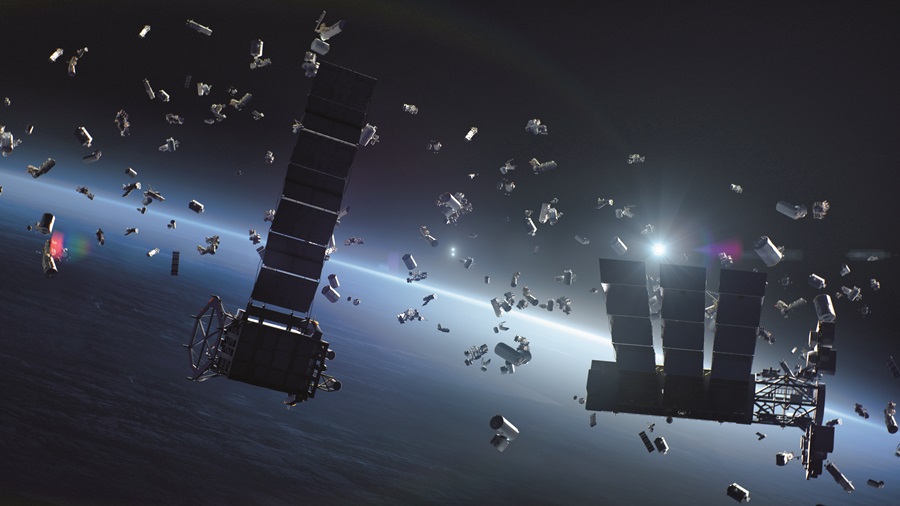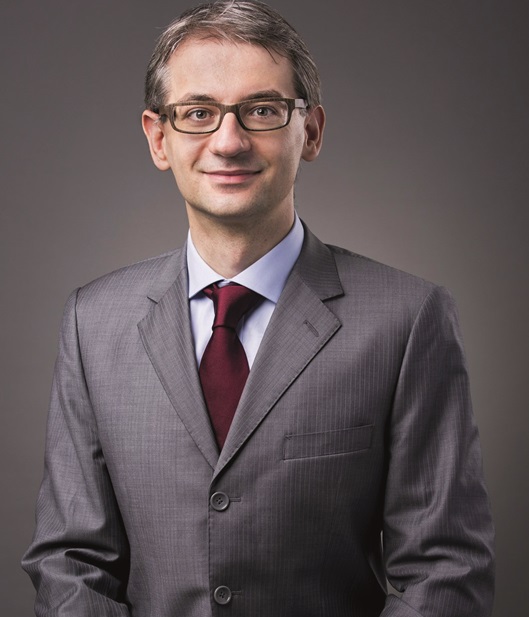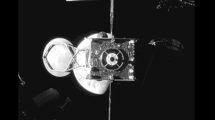 By Lorenzo Arona is a Senior Manager in the Spacecraft Operations department of Avanti Communications.
By Lorenzo Arona is a Senior Manager in the Spacecraft Operations department of Avanti Communications.
As a society, we rely heavily on satellite-enabled services for critical infrastructure, and an increasing level of resources is dedicated to protecting satellites to ensure that services are not interrupted. With the number of satellites in orbit increasing at an unprecedented rate, and the number of debris objects also growing, Space Situational Awareness (SSA), the ability to know where objects are in space and predict where they will be soon, is becoming increasingly challenging. To address an issue of this scale and complexity, there clearly needs to be a collaborative effort by all space actors – from spacecraft manufacturers, satellite operators and service providers, to regulators and governments. Yet although the satellite industry has long been talking about the growing challenge of managing space traffic and mitigating the threat of space debris, actions have often been uncoordinated.
However, a number of collaborative space safety and sustainability initiatives have recently been launched which do perhaps indicate greater levels of cooperation. So, does this mean the world is finally taking the necessary steps to ensure long-term space safety and sustainability, or are these initiatives mere token gestures? Before we come to reflect on the recent developments, it’s helpful to first consider the various challenges that hinder operators’ ability to access effective SSA and mitigate the space debris threat.
Challenges to the Development of Effective Space Situational Awareness
According to ESA’s current estimations, there are approximately 1,036,500 space debris objects greater than 1cm. These objects are travelling at several kilometres per second and all of them are capable of disabling or destroying a satellite if they hit. However, with the current available technology, we can’t see or track small or opaque objects so can only reliably monitor just over 35,000 objects. There are also operational, political, cultural and legal factors at play that hamper the industry’s ability to mitigate the threats arising from ever-increasing volumes of space debris and space traffic.
With active satellites regularly performing orbital correction manoeuvres to fulfil their mission, it’s difficult for a satellite operator to know exactly where an active third-party satellite will be in the near future. This is problematic because if an operator performs a collision avoidance manoeuvre based on its own available data without the other party’s satellite manoeuvre plans, it might inadvertently increase the risk of collision. Operators clearly need to communicate with each other for coordination purposes, but communication between different operators’ operational teams is not a given. It can be very challenging to find the right contact details of the people with whom you want to coordinate operations, and unsurprisingly, language barriers are also an issue, particularly when dealing with technical terminology. The difficulties are compounded with the reluctance of some operators to share information due to the sensitive nature of their missions or concerns that shared data would be misused. In many situations, because of these concerns, some operators do not participate in SSA. It is important to establish a secure environment for exchanging data and the confidence that shared data is used for SSA purposes only. We also need to be creative and open to different ways of communication in order to encourage participation in SSA.
 Even where lines of communication between operators are good, operators may not agree on the assessment of the level of risk of the encounter. This may happen for two reasons: firstly, operators may have different levels of acceptable risk and, secondly, they may rely on different data to make an assessment. This happens because operators often use different local and national conjunction assessment services, and each service typically uses its own sensors’ data and its own orbit determination algorithm.
Even where lines of communication between operators are good, operators may not agree on the assessment of the level of risk of the encounter. This may happen for two reasons: firstly, operators may have different levels of acceptable risk and, secondly, they may rely on different data to make an assessment. This happens because operators often use different local and national conjunction assessment services, and each service typically uses its own sensors’ data and its own orbit determination algorithm.
Consolidating all the regional and national conjunction assessment services that operators rely on into one system would of course help mitigate the risk of misunderstandings and disagreements. This system of systems would be able to fuse all the available data and provide the best estimate of the geometry of the encounter and its threat level. However, given the current geopolitical landscape that we find ourselves in, this is not likely to happen any time soon.
Unlike on Earth, there is no highway code in space that specifies who should have priority and who should give way. In the event of a conjunction assessment where two operators agree on the risk and both want to de-risk it, which one of the two should perform the manoeuvre? This could be difficult to agree on, particularly because there may be financial and operational reasons why an operator may prefer not to carry a collision avoidance manoeuvre.
Review of Recent Developments
Space is an environment shared by all nations. For this reason, management of environmental challenges linked to space safety and sustainability requires collaboration by many different players. The good news is that many shared initiatives promoting responsible and sustainable behaviour have recently been launched.
More than forty commercial, institutional, and not-for-profit entities, covering all phases of a space mission from design, manufacturing, launch, operations, to disposal, have collaborated as part of the Space Safety Coalition (SSC), to develop and produce an updated Best Practices for the Sustainability of Space Operation. This collaborative effort is quite remarkable. The document provides actionable advice to relevant stakeholders such as mission and constellation designers, spacecraft manufacturers, launch service providers, and satellite operators, on how to contribute to space sustainability.

ESA recently launched its Space Debris Charter which forms part of its pioneering Zero Debris Approach and features guiding principles and jointly defined targets to prevent new debris from being added to orbit by 2030. Signatories of the Charter commit to collectively contributing to reducing the probability of debris-generating events, increasing the probability of successful end-of-life disposal, and reducing the probability of casualty from objects re-entering the Earth atmosphere. ESA is also producing a Zero Debris Technical Booklet, to provide guidance on how best to achieve the targets.
The release of the Global Satellite Operators Associations’ (GSOA) Code of Conduct on Space Sustainability marks another important breakthrough. It aims to identify best practices that will enable the world to maximise the use of space’s resources. Its purpose is to minimise the threat of collision between spacecraft, track operational spacecraft, monitor orbital debris, and promote space situational awareness.
Another noteworthy initiative is the release of the World Economic Forum’s Space Industry Debris Mitigation Recommendations. Endorsed by about thirty industry players, these recommendations are not just directed at satellite operators, but also at insurance companies and national governments, which may help to incentivise adoption of best practices.
Perhaps the widest in scope is the UK Space Agency-funded Earth and Space Sustainability Initiative (ESSI). In collaboration with industry, academia, and the insurance and finance communities, ESSI aims to review current space sustainability standards, perform a gap analysis, and publish new standards aimed at filling the identified gaps. ESSI seeks to ensure the sustainable use of outer space by covering the lifecycle of a satellite and all aspects of Space Traffic Management.
Although not new, it’s worth also mentioning another industry-led initiative, the Space Data Association (SDA), a not-for-profit association of over thirty satellite operators working together to promote industry best practices for space debris mitigation. Unlike other initiatives, the SDA also runs a one-of-a-kind Space Traffic Coordination platform. The concept of the SDA spawns from the fact that an operator has the best knowledge of the position of its own satellites, because it knows the planned orbital correction manoeuvres and can generate operational ephemerides that take the effect of the planned manoeuvres into account. One of SDA’s goals is to share resources so that the cost would not be a hindrance for any operators to participate in SSA. Through the years, SDA has been promoting the idea of improving flight safety via data sharing. Due to its nonprofit nature and the fact that it is not affiliated to any one country, SDA could serve as a trusted third party to promote data sharing via a secure data centre to process share data for SSA use only.
Will these Initiatives be Enough to Ensure Space Sustainability?
That is the million-dollar question! The increasing level of engagement of commercial and institutional entities, together with widespread efforts to cooperate and coordinate actions are extremely positive steps forward. On the other hand, these initiatives aim to strike the right balance between ambition and consensus. They identify relevant best practices and set realistic targets that if achieved, will improve the current situation. In time, there is also a hope that these best practices will become accepted rules of behaviour and pave the way towards the creation and adoption of national and international guidelines and standards.
Managing space debris and space traffic is a complex and multifaceted challenge that can only be tackled through the collaboration and resolute effort of all stakeholders. There is no doubt that we are faced with a monumental challenge, but it is not one that is insurmountable. The recent initiatives and developments show a willingness and desire to work together, as well as a commitment to maintaining space safety and sustainability. With willingness and determination, I believe that we can preserve the space environment for the benefit of humanity and future generations.














Add Comment